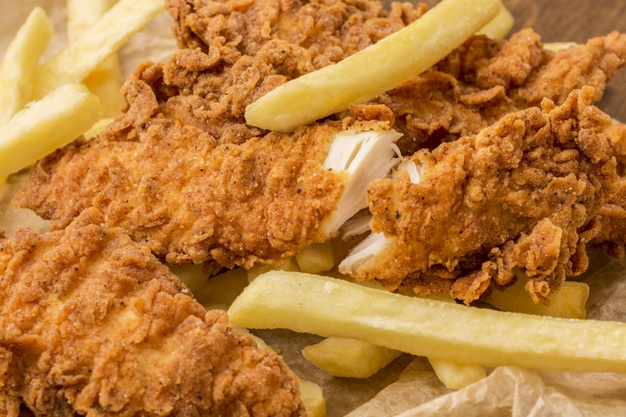top of mind news
- New York Officially Reopens, But Customers Still Dine Outside
- Restaurants and Community Organizations Take a Stand Against Rising Anti-Asian Hate Crimes
- Why Restaurants Should Continue to Diversify Their Revenue Streams in a Post-COVID World
- Restaurant Revitalization Fund Sets Application Deadline
- Reduce Labor And Increase Profits With Signature Cocktails
Poultry
 Chicken slaughter for the week ending May 7th, at 163.7 million head, was 1.9% smaller than 2019 levels. Still, record to near record heavy bird weights are keeping RTC production well above 2019 levels. In fact, the six-week average of broiler output is running 2.4% over 2019 and 1.8% above 2020 when producers were on the front end of sharply higher bird weights occurring. Despite the higher RTC output, the chicken markets are well supported. Wing prices continue to press to new market highs, with word that suppliers are maxed out on deliveries at this point. Still, anticipate the chicken hatchery data as being supportive of production increases but note that not all egg sets placed are making it into chick placements. This remains a concern for future output gains.
Chicken slaughter for the week ending May 7th, at 163.7 million head, was 1.9% smaller than 2019 levels. Still, record to near record heavy bird weights are keeping RTC production well above 2019 levels. In fact, the six-week average of broiler output is running 2.4% over 2019 and 1.8% above 2020 when producers were on the front end of sharply higher bird weights occurring. Despite the higher RTC output, the chicken markets are well supported. Wing prices continue to press to new market highs, with word that suppliers are maxed out on deliveries at this point. Still, anticipate the chicken hatchery data as being supportive of production increases but note that not all egg sets placed are making it into chick placements. This remains a concern for future output gains.
Beef
Packers pushed an aggressive Saturday slaughter schedule ahead of the holiday long weekend, taking last week’s total to 668,000 head. Despite the increase, this week, as well as next week’s throughput may be tempered which will likely continue to support beef prices into the early summer. We continue to look for some price relief into mid-June and beyond, but the seasonal downside potential is not likely to be as abrupt as last year’s fall after the COVID buying surge in late April to early May. The beef 50s remain the only value of the complex, struggling to find support even in the lower-$0.60 area.
Pork
Last week’s hog harvest continued to moderate, with 4.393 million head moving through production plants. Even at these levels, slaughter rates are record large for this timeframe, but remain back of where the industry would have been before COVID. The hog carcass remains well supported, and, as slaughter rates ease further into mid-summer, there may be additional price support noted across the wholesale pork markets. Pork trimmings continue to firm moving into the summer, and given lighter carcasses, the 42s may see more upside risk.
THE SEA
Seafood
The shrimp markets continue to trade at fairly engaging levels. U.S. shrimp imports have been solid. During March, the U.S. imported 21% more shrimp than the previous year. Formidable shrimp import levels are anticipated to persist at least through the spring. However, improving foodservice demand for shrimp is likely to occur as well. Thus, the risk in the shrimp markets is likely to the upside.
THE GARDEN
Produce
The tomato markets have edged downward during the last week due in part to strong supplies. Total tomato shipments, including imports from Mexico, in recent weeks have been tracking near 5% above last year’s depleted levels. Typically, the mature green tomato market moves downward in the coming weeks. The five-year average move for the 5×6 mature green tomato market from now until mid-July is a decline of 43%. Lime supplies are improving however larger sized product stocks remain historically limited.
THE KITCHEN SINK
Dairy
CME cheese block prices last week were the lowest in 13 weeks. CME spot butter prices finished higher and are currently 18.4% above the 2020 average. Domestic milk production in April was up 3.3% (y/y) and the dairy cow herd was 1.2% larger than the prior year. Dairy cows grew in April by 16k (m/m) and March was revised higher by 6k head. This suggests strong milk production in the coming months which will boost solid cheese and butter output. Cheese block prices are moving lower but there is support at $1.510. Butter prices are seasonally rising, but this year’s gains may be only modest at best.
Grains
The food oil markets remain elevated especially soybean oil and corn oil. Existing supplies are limited, and the USDA is forecasting a surge in biodiesel use. The large discount in palm oil suggests that lower soybean oil prices could be pending. But rising biodiesel use could temper some of that market downside potential.
Oil
Natural gas futures last week finished down (w/w) but are near $3.00/MMbtu. As of May 14th, U.S. natural gas stocks were 4.0% smaller than the five-year average for the week. Expect natural gas prices to be influence by summer temperatures.













